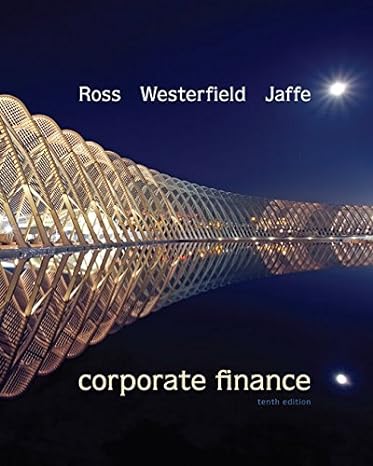APT There are two stock markets, each driven by the same common force, F , with an
Question:
APT There are two stock markets, each driven by the same common force, F , with an expected value of zero and standard deviation of 10 percent. There are many securities in each market; thus, you can invest in as many stocks as you wish. Due to restrictions, however, you can invest in only one of the two markets. The expected return on every security in both markets is 10 percent.
The returns for each security, i , in the first market are generated by the relationship:
R 1 i 5 .10 1 1.5 F 1 e 1 i where e 1 i is the term that measures the surprises in the returns of Stock i in Market 1.
These surprises are normally distributed; their mean is zero. The returns on Security j in the second market are generated by the relationship:
R 2 j 5 .10 1 .5 F 1 e 2 j where e 2 j is the term that measures the surprises in the returns of Stock j in Market 2.
These surprises are normally distributed; their mean is zero. The standard deviation of e 1 i and e 2 j for any two stocks, i and j , is 20 percent.
a. If the correlation between the surprises in the returns of any two stocks in the first market is zero, and if the correlation between the surprises in the returns of any two stocks in the second market is zero, in which market would a riskaverse person prefer to invest? (Note: The correlation between e 1 i and e 1 j for any i and j is zero, and the correlation between e 2 j and e 2 j for any i and j is zero.)
b. If the correlation between e 1 i and e 1 j in the first market is .9 and the correlation between e 2 i and e 2 j in the second market is zero, in which market would a riskaverse person prefer to invest?
c. If the correlation between e 1 i and e 1 j in the first market is zero and the correlation between e 2 i and e 2 j in the second market is .5, in which market would a risk-averse person prefer to invest?
d. In general, what is the relationship between the correlations of the disturbances in the two markets that would make a risk-averse person equally willing to invest in either of the two markets?
Step by Step Answer:

Corporate Finance With Connect Access Card
ISBN: 978-1259672484
10th Edition
Authors: Stephen Ross ,Randolph Westerfield ,Jeffrey Jaffe





